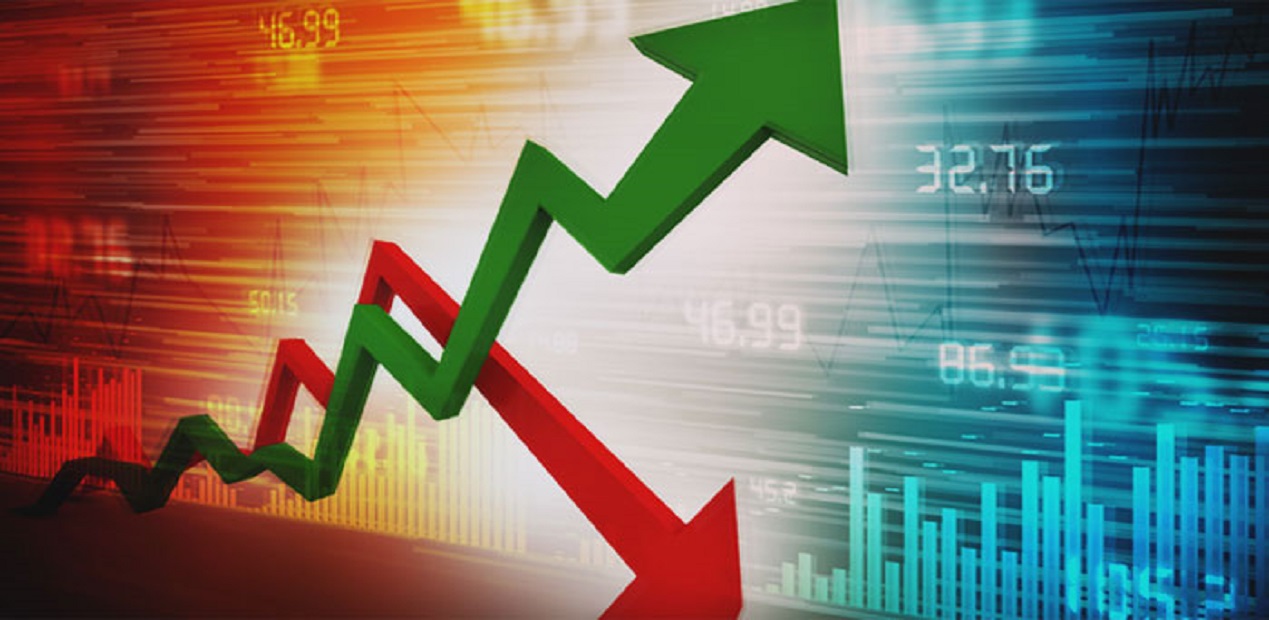A strange paranoia has gripped the world. As Covid-19 accelerates there seems to be uncertainty, chaos and anxiety about the future world order. The world is also grappling with the devastating impact of Covid-19 on the economy, as it is not just a health crisis, rather a social and economic crisis also. The threat of economic fallout further looms large in developing countries and fragile states. The article aims to look at the crippling effect of Covid-19 crisis on Pakistan’s economy. The country was already reeling under a grim economic situation and Covid-19 has further exposed the vulnerabilities of the weak state, which now remains at the edge of an economic collapse.
Pakistan’s economy was in dire straits even before the Covid-19 crisis sent shockwaves. In 2019, the economic condition was dismal on all fronts from human development indicators like health and education to economic parameters like tax-to-GDP ratio, currency performance and foreign exchange reserves. Further, high inflation and mounting debt heightened the economic vulnerabilities that led to Imran Khan hesitantly turning to the International Monetary fund (IMF) and signing a 39 month extended arrangement under the Extended Fund Facility (EFF) programme for an amount of USD $6 billion. The pervasive influence of the harsh conditionalities imposed by the IMF had repercussions on the economy. The brunt of price rise and high inflation was felt by masses leading to distress. So even after a short-term relief by the IMF, the economy remained in shambles.
At the beginning of 2020 Imran Khan provocatively declared at the World Economic Forum “2020 will bring growth and job opportunities for the people”. In the first two-months of 2020 there were some positive indicators like Current Account Deficit plunged by 72 percent to $2.654 billion and foreign exchange levels reaching a safe level. However, on other parameters, the economic crisis continued with inflation reaching 14.56 percent, the highest in the last ten years and the IMF forecasting the GDP growth to be 2.4 percent. However, the worst was yet to come due to the economic fallout of Covid-19. The country reported its first case on 26 Feburary, 2020 in Karachi. The Imran Khan government underplayed the situation and the pandemic spread all over the country. The adverse economic condition led to delay in imposing the nationwide lockdown. However, Pakistan had to face the brunt of global and local lockdown. On 26th March 2020, the currency lost Rs 4.40 to reach at Rs166 against the US dollar in intraday trade in the interbank market. In March 2020, the preliminary assessment of losses done by the Asian Development Bank stood at $5 billion. Alarmingly, it was predicted that Pakistan may face initial loss of $8.2 billion from the economic effects of the coronavirus pandemic. As reported by News International “the losses are going to be incurred on account of drop in the GDP growth because of reduction in services sector, including airline business and others, revenue loss, massive decline in imports, exports, reduction in remittances, disruption in food supplies and other fronts”1. Further in April 2020, the IMF World economic outlook has projected the GDP growth rate at -1.5 percent in 2020. Pakistan is facing multidimensional challenges the foremost among which are poverty and unemployment. It is estimated that the poverty headcount will rise from 24.3percent to base of 29 percent and at least three million people will lose their jobs2. The economic situation remains abysmal on all fronts as for the first time in 68 years the economy has contracted by 0.38 percent3. The steady deceleration of the economy has led Pakistan to desperately turn to international financial institutions. As reported by a Pakistani journalist “the situation also provides an opportunity to access emergency funds allocated by leading international lending agencies to fight coronavirus” 4.
Being a habitual borrower it was in March 2020 that Pakistan asked the IMF for a low cost, fast-disbursing loan under its Rapid Financing Instrument (RFI) to deal with the disastrous economic impact of Covid-19. The RFI provides quick financial assistance, which is available to all member countries that exhibit urgent balance of payments needs. RFI replaced the IMF’s previous policy that covered Emergency Natural Disaster Assistance (ENDA) and Emergency Post-Conflict Assistance (EPCA). On April 16 the IMF approved a loan of $1.4 billion for Pakistan for its urgent balance of payment requirements and assist it in dealing with the socio-economic impact of the crisis. Pakistan has also received $200 million from the World Bank and $305 million emergency Covid-19 loan from the Asian Development Bank. To overcome the disastrous impact of Covid-19, Imran Khan had also appealed for a “global initiative on debt relief”. In addition, Pakistan is seeking a moratorium on its foreign debt payments to multilateral creditors, as $2.3 billion external debt will mature in next three months.
The external help and borrowings have given Pakistan some breathing space for its economy. However, these remain only short-term relief measures. The economy continues to face unexpected shocks and remains in doldrums. The recent Economic Survey released on June 11, 2020 showed the government had missed all major economic targets during the fiscal year 2019-20.
Pakistan’s GDP growth had contracted by 0.38 percent during FY20 as against the projection of over 3 percent. Growth of agricultural sector is 2.67 percent as compared to the target of 3.5 percent. Industrial sector’s growth has shrunk by 2.64 percent as against the target of 2.4 percent. Growth of services sector has also contracted by 3.4 percent as compared to projection of 4.8 percent5.
According to the government Covid-19 has dented the economy. However as mentioned by Dawn the “period covered by the economic survey data includes first nine months of the fiscal year (July 2019- March 2020), so much of what is portrayed cannot be attributed to the disruptions from Covid-19” 6.
On June 12, 2020 Pakistan also unveiled its highly ambitious and unrealistic budget. The budget referred to as “corona budget” was introduced amidst the Covid-19 crisis. The underlying theme of the budget has been to prioritize the traditional military security at the cost of other development programmes7. This can be ascertained from the fact the defence allocations amounted to Rs. 1.289 trillion and the federal development programme was budgeted at Rs 650 billion. The sectors like health and education have been allocated 20 billion and 34 billion respectively. Though Pakistan has doubled the expenditure on health amidst the worst health crisis, it still is 0.4 percent of total budget expenditure of FY21. The budget doesn’t immediately address the issues such economic slowdown, growing unemployment rate and high budget deficit in the next year8. The budget has also set highly unrealistic tax collection target for the Federal Bureau of Reserves (FBR). The target is of Rs 4.96 trillion, which is around 27 percent higher than the PKR 3.91 trillion taxes collected in FY2020. Analysts are of the opinion that improbable budget has been made under the looming shadow of IMF.
It is pertinent to mention that Pakistan faces deep structural economic weaknesses. The current government led by Imran Khan had promised “Naya Pakistan” premised on a strong economy. However, Pakistan is lurching from one crisis to another. As long as there is weak and uninformed leadership, ad hoc policies and dependence on foreign borrowings the Pakistan economy will continue to be in deep trouble. Covid-19 comes as a stark reminder of the hollowness of a weak state’s economy. Pakistan should acknowledge the trouble and start working from scratch; otherwise it is heading for a collapse.
References
- https://www.newindianexpress.com/world/2020/mar/23/pakistan-may-face-economic-loses-of-rs-13-trillion-due-to-coronavirus-2120624.html
- https://www.dawn.com/news/1557111
- https://economictimes.indiatimes.com/news/international/business/pakistans-economy-contracts-for-first-time-in-68-years-by-0-38/articleshow/76325063.cms
- https://www.orfonline.org/research/covid19-and-pakistan-the-economic-fallout-67296/
- https://nation.com.pk/12-Jun-2020/all-economic-targets-missed
- https://www.dawn.com/news/1562989
- https://www.vifindia.org/article/2020/june/24/a-budgetary-farce-in-pakistan
- https://newslab.tribune.com.pk/budget-2020-21/
(The paper is the author’s individual scholastic articulation. The author certifies that the article/paper is original in content, unpublished and it has not been submitted for publication/web upload elsewhere, and that the facts and figures quoted are duly referenced, as needed, and are believed to be correct). (The paper does not necessarily represent the organisational stance... More >>
Image Source: https://www.geo.tv/latest/256405-can-pakistan-escape-its-economic-curse











Post new comment